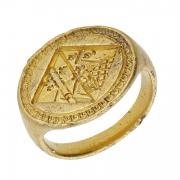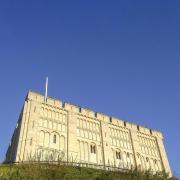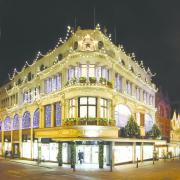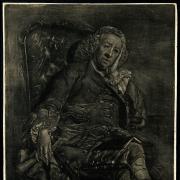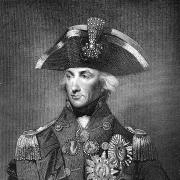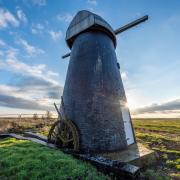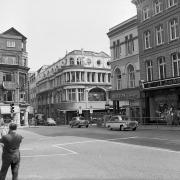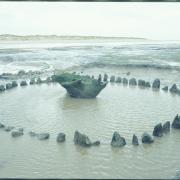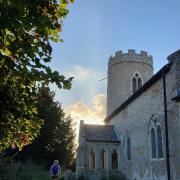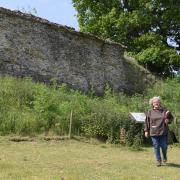Thousands of Norfolk men were trapped in the horror of Changi Jail in 1942, prisoners of the Japanese. But somehow, to boost morale, the English prisoners challenged their Australian colleagues to a game of cricket...
By John Willis
They came from all corners of Norfolk: a baker from Wymondham, a farm labourer from Castle Acre, a gardener from Brancaster. They were soldiers in the 4th ,5th and 6th Battalions of the Royal Norfolk Regiment (Territorial Army) who fought desperately in 1942 to defend the vital British base in Singapore.
When that mighty fortress abjectly surrendered on February 15, these Norfolk men were condemned to nearly four years of appalling malnutrition, disease, and brutality in Japanese captivity.
Many were farm boys, and before sailing south to war in October 1941, they had returned home to bring in the harvest. Before that the height of excitement had been blowing a hole in the Britannia Pier, Great Yarmouth to deter German invaders. Their destination was the Middle East, but the Japanese invasion of Malaya meant they were hastily diverted to defend Singapore.
The military situation was so precarious when the reinforcements finally arrived in late January 1942 there was no time for acclimatisation. After 11 weeks at sea, and trained for desert rather than jungle warfare, the Norfolk soldiers were pitched straight into a brutal conflict. Private Bert Miller from Diss served with the 196th Field Ambulance Company and saw the results of relentless Japanese bombing of Singapore.
‘Smoke darkened the sky and midday became dusk. So high and so vast the great columns seemed to go on forever. In the canals and ditches bloated corpses of air raid victims and their animals floated on oil from the streaming tanks. Among the ruins stark and stiffening bodies lay unburied…casualties were reaching two thousand a day,’
The men from the small towns and villages of Norfolk soldiers fought bravely against the relentless Japanese. Private Herbert Barker, from Bressingham near Diss, wrote, ‘This was the start of hell on earth... snipers, mortars, gunners, and dive bombers raised the area for miles. Everywhere we turned men were falling killed or wounded by this awful barrage. The stretcher-bearers were running back and forward carrying back smashed bodies that were alive but could never be made whole again.’
Padre Eric Cordingly, post-war Bishop of Thetford, was in a burial party sent to where Norfolk men had been fighting two days before. They found over 50 bodies in ditches but, ‘we buried each one.’
On February 15, 1942, Singapore, desperately short of water and ammunition, surrendered. Major-General Merton Beckwith-Smith commanded the 18th Division including the Norfolk Battalions. He left his men in no doubt of the impossible situation they had been thrust into, ‘The division was sent into a theatre of war for which it was neither trained nor equipped to fight a clever and cunning enemy who was on the crest of the wave. It was sent to fight a battle already lost…’
The surrender was a bitter shock to the soldiers, now condemned to years as prisoners. Bert Miller summed up the uncertainty, ‘We had been blasted into another world and in this new environment it was a silence that screamed at us. Some wept, some cursed, and those too exhausted to curse or weep or unable to fight fatigue any longer, fell where they stood and fitfully slept. Then we waited…’
In two days, over 50,000 men were marched in the brutal heat to the former British Army barracks at Changi. The Japanese had no idea how to feed or organise such numbers. Meals soon became meagre portions of weevil-ridden rice with a few scraps of vegetables. Inevitably, dysentery and beriberi were common.

In this hostile world, prisoners organised sport to keep their minds from thinking about food. Lt Colonel Leonard Curtis of the 5th Norfolks had hidden a kitbag in the barracks containing cricket equipment. Not wanting to waste such luxuries, Australian prisoners were challenged to a Test series, the Changi Ashes.
As protector of the equipment, Curtis picked the England team, which was entirely Norfolk-based, apart from one Suffolk interloper. They enjoyed two advantages. Firstly, Lingwood’s Sergeant Geoffrey Edrich was talented enough to become a post-war Lancashire professional.
His legendary brother Bill batted for England, and two other brothers were county cricketers. Secondly, Lt Curtis also appointed the umpire and the scorer from Norfolk.
Not much is known about the game, but 23-year-old village cricketer Cyril Bix from King’s Lynn was proud to be chosen, ‘I had always dreamed of playing for England against Australia. Well, every lad does, doesn’t he? So, we didn’t think of ourselves as POWs at all that morning. It was the first day of the first match and we were representing our country.’
Australia was captained by their Test wicketkeeper, Ben Barnett. Norfolk succeeded where so many English Test Teams have failed. They whitewashed Australia by 3-0, with Geoff Edrich scoring centuries in all three matches.
The game worked its magic in another way, as Cyril Bix recalled, ‘Little things like the Test series helped keep me alive. We tried to concentrate on anything that would keep our spirits up.’
This happy sporting interlude did not last long. Prisoners were soon dispatched from Changi to build the Thai-Burma railway, including the famous Bridge over the River Kwai. Colonel Philip Toosey, educated at Gresham’s School in Holt, was the senior British officer building the bridge.

His primary aim was to save as many of his men’s lives as possible. All told, twelve thousand Allied servicemen died building the railway. Lucky survivors were then crammed into fetid holds of rusty hellships to labour in Japan. On 12 September 1944 two hellships were torpedoed by American submarines. More than 1500 men died in that attack, at least a dozen from Norfolk
Herbert Barker from Bressingham was adrift in the ocean without food or water for nearly four days. Like him, scores of survivors clung desperately onto life rafts or wooden flotsam. Extraordinarily, a submarine responsible for the original sinking returned to the scene days later, completely unaware they had killed so many of their own Allies.
Now they hurriedly fished 73 lucky men from the sea, including Herbert Barker ‘Thanks to the crew and officers of the USS Pampanito, we are free again after two and a half years of misery and slavery,’ Herbert wrote.

Those survivors who were rescued by the Japanese rather than the Americans, carried on to mainland Japan and were forced to work in the factories and shipyards that fuelled Japan’s war effort. Scores of British prisoners even survived the atomic bomb dropped on Nagasaki.
The war in the Far East and the fate of so many young East Anglian men are deeply intertwined. Of 2,000 men in the Norfolk Regiment, about 600 died in the Far East, a death rate of one in three. I called my book Nagasaki: The Forgotten Prisoners because so many felt they were afterthought when they returned, a postscript to the victory in Europe.
But Norfolk won’t let this story be forgotten. A church in Wymondham, a memorial in Great Yarmouth, a museum in Swaffham, and active associations for veterans and their families, are all reminders that Norfolk is the epicentre for Far East remembrance.

Adapted from Nagasaki: The Forgotten Prisoners by John Willis, published by Mensch on 2 August 2022.John Willis lives in Brancaster and London.





